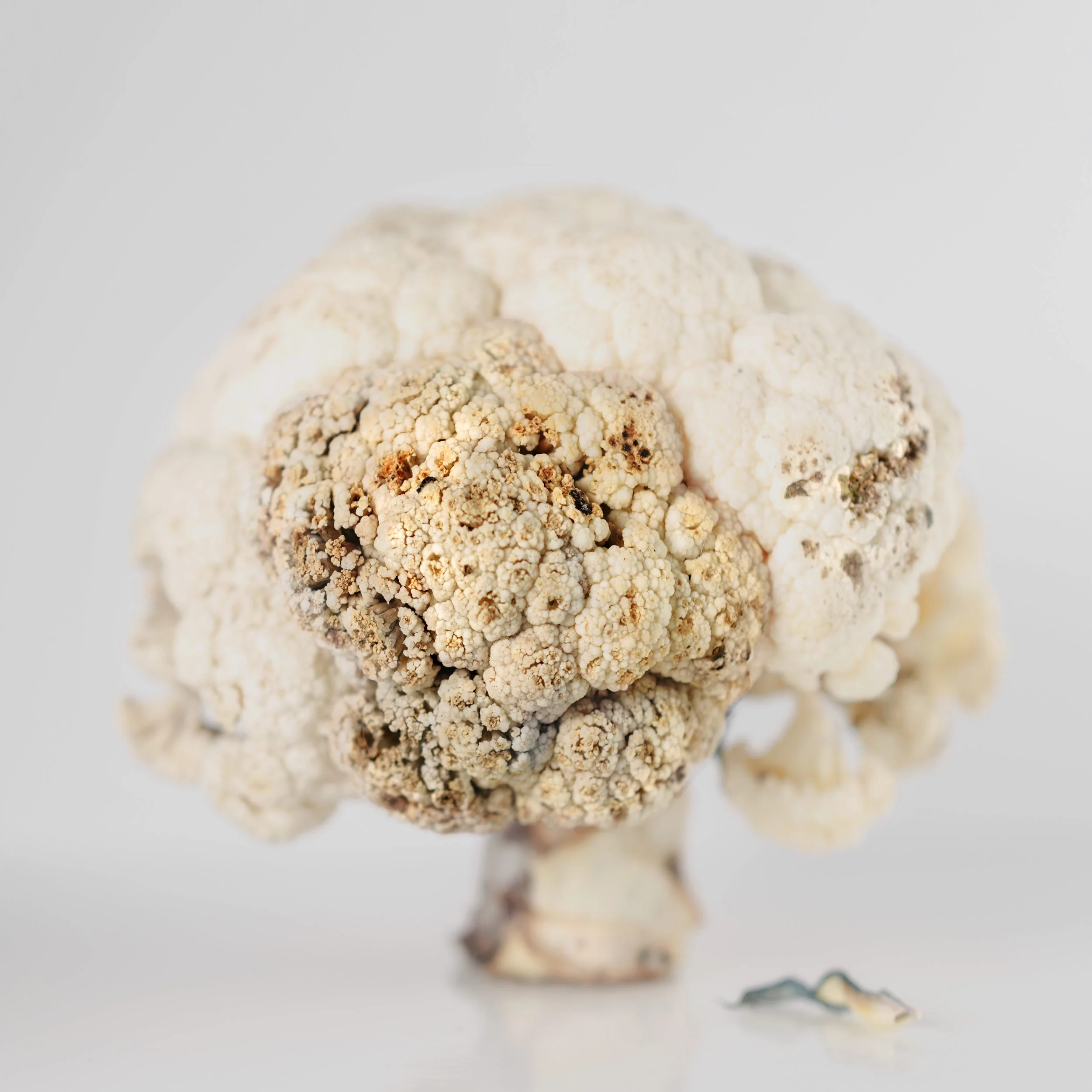Nothing good grows in the ‘not-crispers-but-rotters’
More than 50% of the food that Canadian households throw out could have been eaten. Instead, we leave those millions of tonnes of edible food worth billions of dollars to perish, unseen and forgotten in the back of our fridges, freezers, and pantries, turning our own and the world's resources to waste.
That 50% at the back of my own household's fridge is both the object and the subject of this work.
As a society, we conceal our garbage, our excrement, our decaying bodies, and our dying loved ones, and we shroud them in silence: our conversations about them are muted, often followed by an apology for raising them. I came to realize that we— and I— cannot continue to avoid our responsibilities for the world, our own homes, and our lives. Nothing good grows out of sight and mind in our fridges' not-crispers-but-rotters. I was compelled to expose these hidden things by creating objects that I could see and touch.
Secure access to nutritious, affordable, and abundant food is vital—and is contingent on food's storage and preservation. Archaeological discoveries at sites dated as far back as 6000 BC show that housing design even then was centered on the preparation, storage, and consumption of food. And this continues to be true.
Supply interruptions, shortages, and affordability of food, however they come about, are threats to survival. World history is full of tragic examples, and even now, in 2022, the World Food Programme reports Nigeria, Ethiopia, South Sudan, and Yemen to be facing famine, with many other countries highly at risk of it.
All too recently, the Covid-19 pandemic illuminated the complexity and fragility of food supply chains, and now the war in Ukraine is causing food insecurity. Canada's Food Price Report 2022 predicts that this year alone, food prices in Canada will rise 5% to 7% and that the average Canadian family of four will pay an extra $966 for food, for a total annual grocery bill of $14,767. The primal need to eat is now spiked with fear.
Food is sown, grown, processed, stored, sold, and transported many times over before it reaches our plates, using not only financial resources but vast natural resources as well, disrupting ecosystems, and producing greenhouse gases, all with effects on the climate. And yet 58% of the food produced in Canada will be lost or wasted every year.
Process
The development of the installation had to overcome some obstacles – the smell, bacterial contamination, and ongoing decay of the subjects. I experimented with a variety of mediums to manage revulsive aspects and stop the rot. None of these yielded the result of creating something presentable without the spectacle centered around revulsion taking over. I settled on casting them in food-grade clear epoxy resin. I chose the square forms, deliberately mirroring the concrete blocks essential in building a shelter.
Sources
1.) Music, Janet. “Canada's Food Price Report 2022.” Dalhousie University. Agri-Food Analytics Lab, December 7, 2021. https://www.dal.ca/sites/agrifood/research/canada-s-food-price-report-2022.html.
2.) Gooch, Martin, Delia Bucknell, Dan Laplain, Benjamin Dent, Peter Whitehead, Abdel Felfel, Lori Nikkel, Madison Maguire, Benita Aalto, and Christine Borne. “The Avoidable Crisis of Food Waste: Technical Report.” Edited by Caroline Glasbey. https://www.secondharvest.ca/. Value Chain Management International Inc. and Second Harvest, 2019. https://www.secondharvest.ca/getmedia/58c2527f-928a-4b6f-843ac0a6b4d09692/The-Avoidable-Crisis-of-Food-Waste-Technical-Report.pdf.
3.) City of Toronto. “Food Waste.” City of Toronto. Live Green Toronto, March 14, 2022. https://www.toronto.ca/services-payments/recycling-organicsgarbage/long-term-waste-strategy/waste-reduction/food-waste
